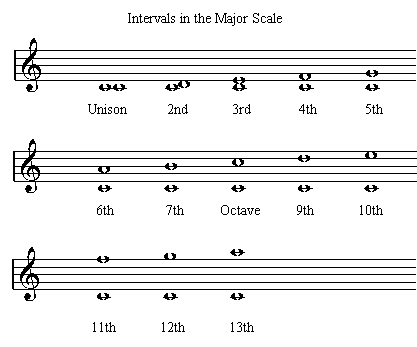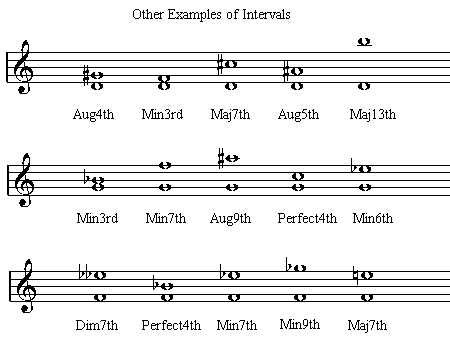An interval is the distance between two notes. When the notes are played together they are called a Harmonic Interval, when played consecutively they form a Melodic Interval. By counting the number of alphabet letters from the bottom note up to the top note will give you the type of interval. eg from C to E is a 3rd (counting the letters C D & E) from C to A is a 6th (counting the letters C D E F G & A).
To determine the quality of the interval (eg Perfect, Major, Minor, Augmented or Diminished) one must consider the bottom note to be the major scale tonic and determine if the top note exists within that scale. eg from C to Eb is a 3rd ( C D & E) but as we are using C as the tonic of the major scale as our reference point, we must refer to the interval as a Minor 3rd as Eb is not a note in the C Major scale. To understand this it is important to know how to classify the quality of an interval.
- If the top note is in the Major scale and is a 2nd 3rd 6th or 7th the interval is a Major Interval.
- If the top note is in the Major scale and is a Unison 4th 5th or Octave the interval is considered to be a Perfect interval.
- If a Major Interval is lowered by a half step (semitone) it becomes a Minor Interval
- When a Perfect Interval is raised by a half step it becomes an Augmented Interval
- When a Minor or Perfect interval is lowered by a half step it becomes a Diminished Interval

